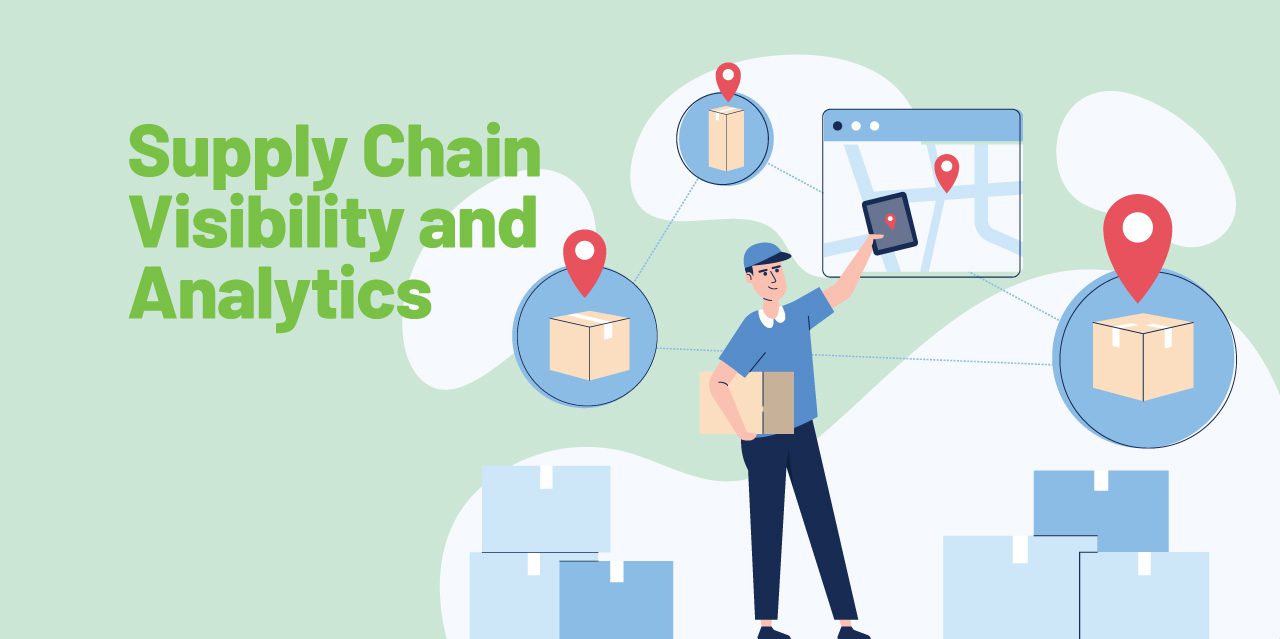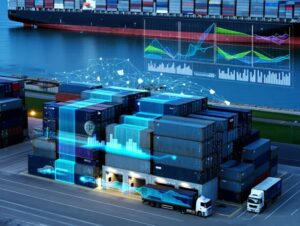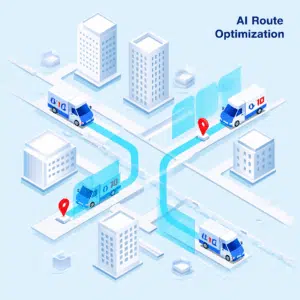Analytics and visibility of the supply chain are two of the most important aspects of supply chain management for any company. By using them, businesses can drive deeper insights, make better decisions, optimize their supply chains, and improve their overall efficiency.
Without actionable supply chain analytics, it is very challenging for companies to maintain supply chain visibility. To improve supply chains and make better decisions, businesses need to properly analyze the data they regularly collect.
However, even if the data cannot be analyzed due to technology issues, high costs or complexities in the supply network, it is still important for businesses to collect supply chain data periodically. Whenever a supply chain analysis is needed, they can use this tool.
Supply chain visibility and supply chain analytics help you determine what processes need to be improved or optimized for your business to remain competitive.
In this blog post, we will discuss the real value of supply chain visibility and analytics solutions and how they can benefit your business.
Why is Supply Chain Visibility Important?
With supply chain visibility, you can see how your suppliers, logistics partners, and customers are involved in the supply chain.
By monitoring the supply and distribution systems, you can catch any disruptions before they become severe. You can also track key metrics such as product volume, quality, and delivery time so that you know what’s going on at every stage of the supply process.
Real-time visibility reduces waste by enabling better planning decisions based on accurate data instead of guesswork. It saves money because there isn’t too much inventory sitting around unsold when demand slows down (or not enough during peak times).
Having better information also reduces risk, allowing supply chain managers to make better decisions and drive deeper insights. Even better, it creates a competitive advantage over other suppliers who do not have access to real-time visibility data for optimizing their supply chains.
Through supply chain visibility, companies can make better supply chain decisions, improving their competitive advantage. A key component of supply chain visibility is supply chain analytics since it provides managers with the information they need to make informed decisions about their supply chains.
Why Are Supply Chain Analytics Important?
Supply Chain Analytics is the process of collecting, analyzing, and transforming data from various areas within supply chains to produce actionable information for decision making.
In addition to improving visibility into the supply chain itself, supply chain analytics also leads to better decision-making across the supply chain. For instance, inventory levels have been optimized and supplier relationships have been improved in the past using supply chain analytics.
With the ability to identify trends and patterns from the collected data, supply chains can become more agile and better prepared to handle disruptions or unexpected changes among other benefits. Improved visibility can reduce costs, improve customer service, and even drive new product innovation.
Combining Supply Chain Visibility And Analytics
Clearly, analytics and visibility are two tools that can help organizations and supply chain managers stay on top of things.
Visibility allows them to see all aspects of the supply chain in real-time. It helps them track inventory levels, view shipping statuses, and order fulfillment. Meanwhile, analytics allow them to gather and analyze data from across the supply chain to identify trends and patterns.
Together, visibility and analytics provide a comprehensive view of the supply chain, allowing managers to troubleshoot problems quickly and make decisions based on accurate information.
Which Key Metrics Should You Measure?
Managers need to be able to assess progress in order to use visibility and analytics efficiently. Measuring specific metrics can help them assess whether supply chains are optimized.
Key supply chain visibility metrics include:
Order Completion Time (OCT) – the time it takes to complete an order from start to finish. It includes lead times, delivery times, and customer service response times. The quicker your OCT can be, the better. Nonetheless, some companies may wish to have longer OCTs if they plan to use them as competitive advantages against competitors whose supply chains aren’t as efficient or agile.
For example, if you are working on supply chain agility, shorter is always better. These days, customers demand quick turnaround times. Where possible, measure its performance periodically throughout any given year without disrupting normal business operations, to ensure it meets their expectations. By doing so, you will be able to better understand areas in need of improvement.
Inventory Turnover (IT) – describes how often inventory is replaced. A high IT indicates that products move through the supply chain rapidly and that demand is being met.
On-Time Delivery (OTD) – the frequency with which orders are delivered on time. Companies that provide same-day or next-day delivery services should pay particular attention to this metric.
Other key supply chain analytics metrics include:
Cost of goods sold (COGS) – total cost of manufacturing and selling a product, including materials, labor, and overhead expenditures.
Gross margin – the difference between revenue and cost of goods sold expressed as a percentage.
Operating margin – the difference between revenue and operating costs.
The Value of Visibility & Analytics
Having visibility and analytics of your supply chain can help businesses make better decisions about their supply chains. In turn, this allows them to meet their goals, save money and increase profitability.
By using visibility and analytics in tandem, and by regularly measuring them, managers can gain a comprehensive view of the supply chain, and can then troubleshoot problems quickly and make decisions that are based on accurate data.
Looking for the right technology, automation and software development partner? RTS Labs has helped hundreds of businesses of all sizes successfully develop the right outsourced custom logistics and supply chain software or modify their existing platform or ERP for many business needs. Get in touch with us today to learn more about how we can help.






